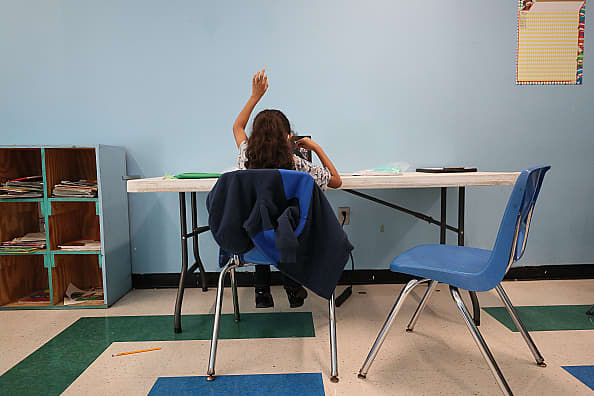Parents with kids stuck home during the pandemic will tell you how stressed they are, but now the CDC has proof that virtual schooling is taking a real physical and emotional toll — driving some parents to drugs and alcohol to help cope.
The new findings, published Thursday by the U.S. Centers for Disease Control and Prevention, suggest that virtual learning “might present more risks than in-person instruction related to child and parental mental and emotional health and some health-supporting behaviors,” the researchers said.
Schools nationwide were quickly shuttered last spring as the coronavirus rapidly swept across the U.S., forcing millions of students and their parents to unexpectedly grapple with online learning throughout the year. While some states have made extensive efforts to return children back into the classroom, others have struggled to respond to safety concerns from parents and educators.
Increased stress levels
The CDC surveyed 1,290 parents or legal guardians of school-age children who were up to 12 years old between October and November. Among participants, 45.7% said their kids received virtual instruction, 30.9% in-person and 23.4% of kids were in a hybrid teaching program.
Overall, almost half — 46.6% — of all parents reported increased levels of stress, 16.5% said they were using more drugs or alcohol and 17.7% said they had trouble sleeping, among other deleterious effects from the pandemic. But those with kids in full-time or part-time virtual learning programs reported higher levels of suffering across the board than parents with kids in school, researchers found.
More than half, 54%, of parents with kids stuck in virtual school said they suffered from increased emotional distress, 16.4% said they were increasingly using drugs or alcohol and 21.6% said they had trouble sleeping at night. Those issues were less prevalent among parents with kids attending school in person. Just 38.4% of those parents said they were more stressed, 13.7% said they were using drugs or alcohol to cope and 12.9% said they had trouble sleeping at night.
Substance use
Increased substance use was most prevalent among parents with kids in hybrid learning programs — where students were virtual some days and in class others — with 20.5% reporting increased use, researchers found.
Parents with kids in virtual learning programs were also most likely to have lost their job, worry about job stability, face child-care challenges and experience conflict between their work and kids.
Virtual learning was harder on students as well, researchers found.
More than half, 62.9%, of parents with children learning from home said their kids were getting less exercise, 58% said they were spending less time outside, 86.2% said they were spending less time hanging out in person with friends and 24.9% said their kids’ mental or emotional health had worsened.
The findings, which researchers said represent the broader U.S. population, said virtual instruction was more commonly found among racial and ethnic minority parents. Further research is required to determine whether remote learning has disproportionately negative effects on those groups.
Disrupting services
“The pandemic is disrupting many school-based services, increasing parental responsibilities and stress, and potentially affecting long-term health outcomes for parents and children alike,” wrote Jorge Verlenden, the study’s lead author.
The CDC’s findings come as President Joe Biden makes reopening schools for in-person learning a top priority in the first 100 days of his administration.
On Wednesday, the Department of Health and Human Services announced that it would pour $10 billion from the recently passed stimulus package into Covid-19 testing for schools beginning in April.
New school guidance
Almost half of K-12 students are back to learning in person five days a week, while another 30% are attending school in person at least part of the time, according to recent data from Burbio, a service that tracks school opening plans. Nearly 21% of students are still learning online only.
The CDC updated its safety guidance for reopening schools Friday, reducing its social distancing recommendations from 6 feet to 3 feet in most cases so long as everyone wears masks.
“CDC is committed to leading with science and updating our guidance as new evidence emerges,” CDC Director Dr. Rochelle Walensky, said in a statement. “Safe in-person instruction gives our kids access to critical social and mental health services that prepare them for the future, in addition to the education they need to succeed.”
Biden has pushed states to open vaccine eligibility to all educators by the end of March. As for students, White House Chief Medical Officer Dr. Anthony Fauci said on Wednesday that high schools students could have access to a shot before the fall school year while younger, elementary-aged students will likely have to wait until the first quarter of 2022.
— CNBC’s Will Feuer contributed to this report.
